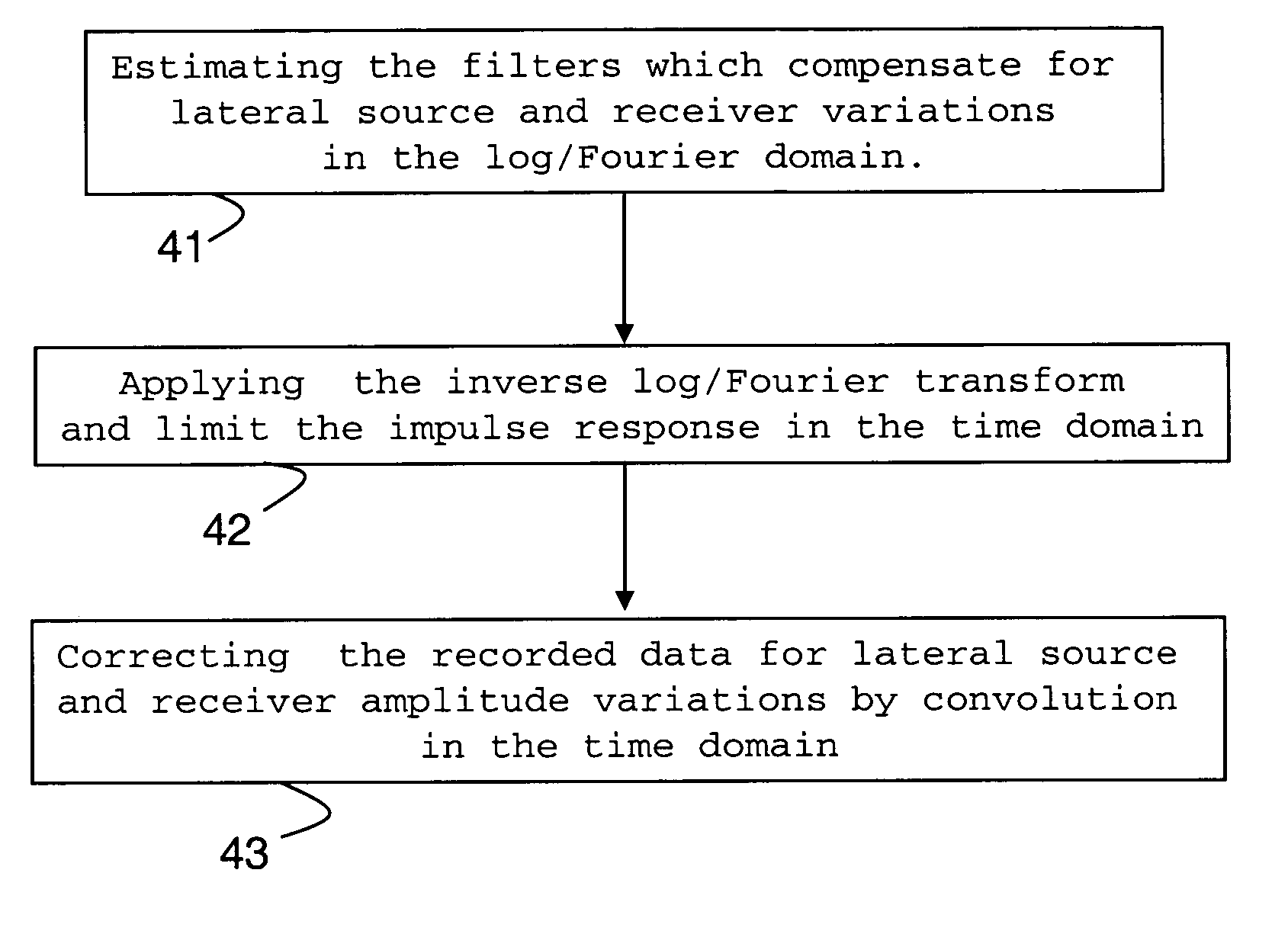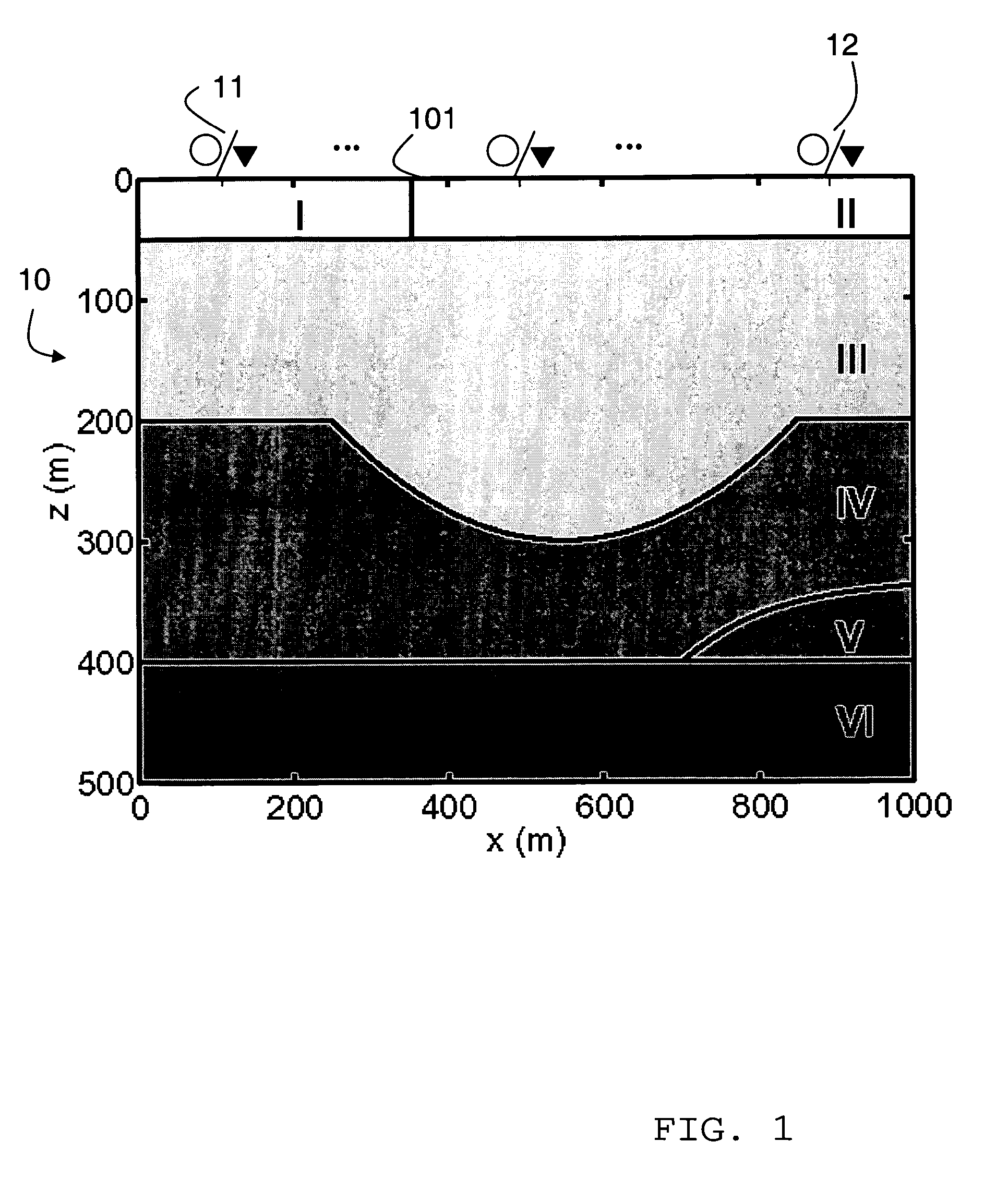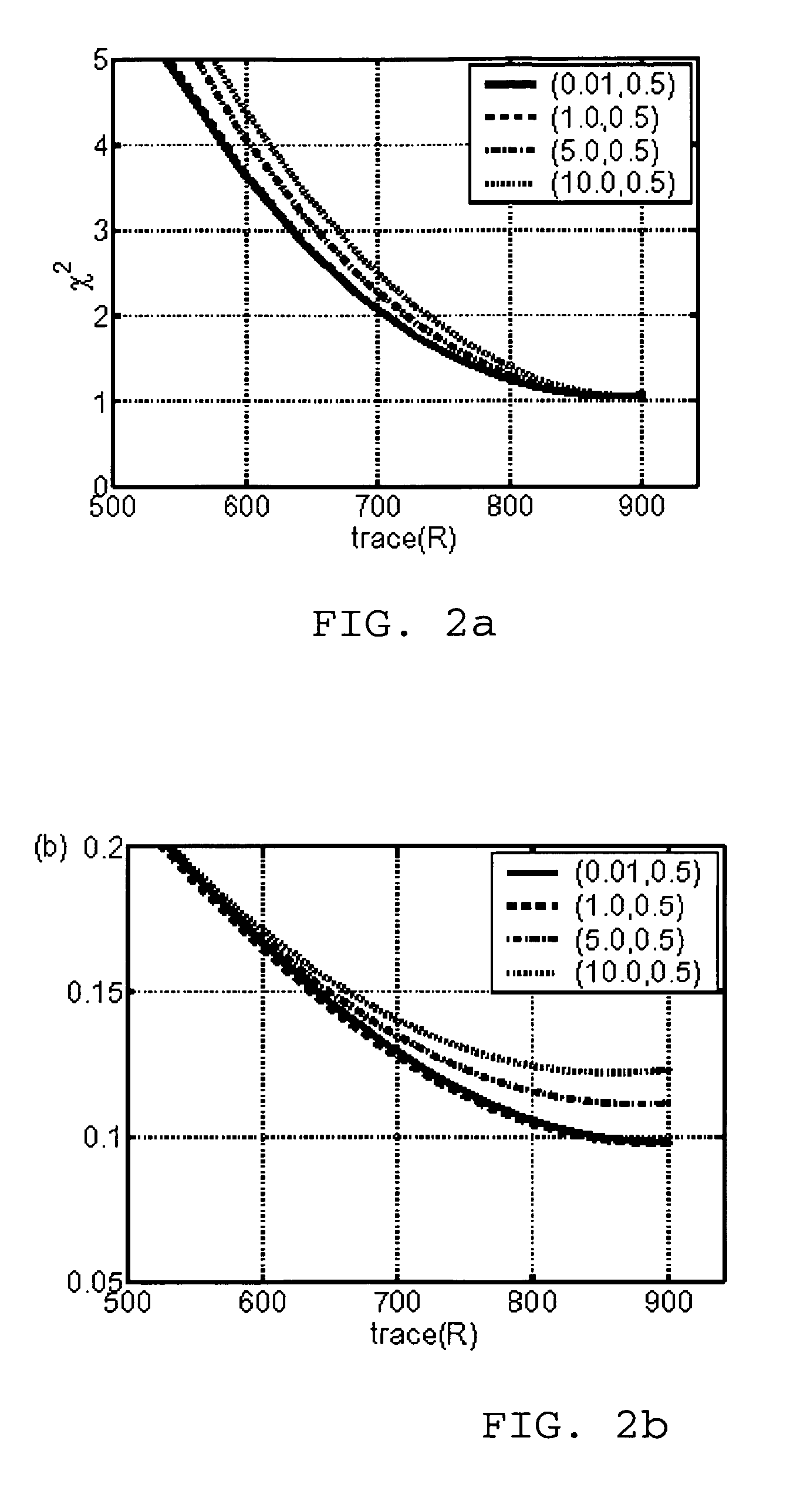Amplitude correction for seismic recordings
a technology for seismic recordings and amplitude correction, which is applied in the field of amplitude correction for seismic recordings, can solve the problems of biased avo trends and degrade the quality of stacks
- Summary
- Abstract
- Description
- Claims
- Application Information
AI Technical Summary
Benefits of technology
Problems solved by technology
Method used
Image
Examples
Embodiment Construction
[0028]It is known as such that multi-component data (3C×3C), excited by a source located at xj and recorded at location xi can be represented as a matrix of traces:
[0029]V(t,i,j)=(Vxx(t,i,j)Vxy(t,i,j)Vxz(t,i,j)Vyx(t,i,j)Vyy(t,i,j)Vyz(t,i,j)Vzx(t,i,j)Vzy(t,i,j)Vzz(t,i,j)),[1]
[0030]with the top row corresponding to the in-line (x) geophone traces from in-line (x), crossline (y), and vertical (z) sources. The second row contains crossline geophone traces, and the third row vertical geophone traces. The source and receiver positions are located on a line. The indices i and j refer to the receiver and source location numbers, respectively. Considering the earth as a linear system for the propagation of seismic waves, the recorded traces V(t; i; j) satisfy a convolutional model (Zeng & MacBeth, 1993, Algebraic processing techniques for estimating shear-wave splitting in near-offset VSP data: Theory: Geophisical Prospecting 41, 1033-1066),
V(t,i,j)=R(t,i)*G(t,i,j)*S(t,j), [2]
[003...
PUM
 Login to View More
Login to View More Abstract
Description
Claims
Application Information
 Login to View More
Login to View More - R&D
- Intellectual Property
- Life Sciences
- Materials
- Tech Scout
- Unparalleled Data Quality
- Higher Quality Content
- 60% Fewer Hallucinations
Browse by: Latest US Patents, China's latest patents, Technical Efficacy Thesaurus, Application Domain, Technology Topic, Popular Technical Reports.
© 2025 PatSnap. All rights reserved.Legal|Privacy policy|Modern Slavery Act Transparency Statement|Sitemap|About US| Contact US: help@patsnap.com



